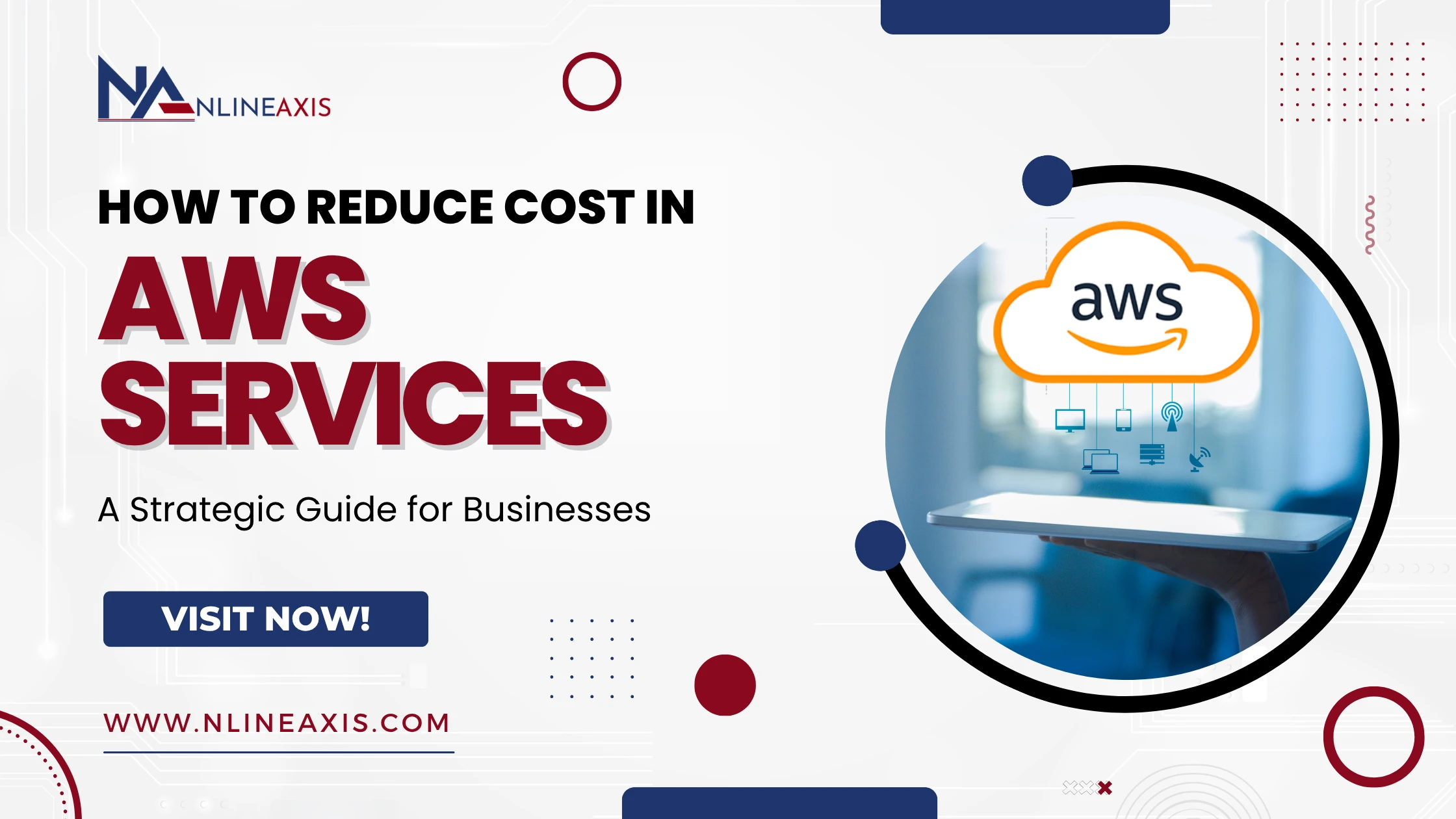How to Reduce Cost in AWS Services: A Strategic Guide for Businesses
With the cloud becoming the norm, AWS emerges as a dominant leader offering high scalability, strong security, and a wide range of services. Keeping organizations reliant on AWS for their IT should make efficient and optimized cloud spending a top priority on the agenda. If there is no cost management strategy in place, expenses on AWS can soon add up and jeopardize your organization’s financial health.
In this article, we drill down on the nuts-and-bolts techniques on how to control AWS costs to ensure your organization can see a return on the best value with budgetary limits in mind. These strategies are just as effective whether your organization is just beginning or already established.
1. Why AWS Cost Optimization Matters
Before moving on to the practical strategies, let’s review why effective cost management in AWS matters:
Avoid over-provisioning: You are likely to incur unnecessary resource costs if you fail to track usage.
Align cost with usage: Companies often leave assets active when idle and pay further charges.
Improve ROI: Through cost optimization, you ensure that every AWS spend increases efficiency, spurs innovation, or improves business positioning.
Right-Size Your Resources
Among the greatest AWS expense-reducer strategies is making sure that your EC2 instances, RDS databases, and other resources are appropriately sized.
Tips:
Monitor performance by using AWS Cost Explorer and CloudWatch Metrics.
Check your EC2 instances for low CPU usage (below 40%) and look at downscaling opportunities in terms of cost savings.
A migration of your workload to run on Graviton-powered instances could help to improve your price performance.
Nlineaxis Pro Tip: Right-sizing needs made simpler by automated solutions from 3rd party tools or Trusted Advisor analysis.
2. Use Reserved Instances (RIs) and Savings Plans
If your workloads are predictable and long-term, opt for Reserved Instances or Savings Plans instead of On-Demand pricing.
Benefits:
-
Save up to 72% compared to On-Demand rates.
-
Suitable for EC2, RDS, ElastiCache, and more.
-
Compute Savings Plans offer flexibility across instance types and regions.
Nlineaxis Strategic Tip: Use a mix of 1-year and 3-year RIs and Savings Plans to balance cost savings with flexibility.
3. Leverage Auto Scaling and Spot Instances
AWS Auto Scaling allows your applications to automatically adjust capacity according to demand, ensuring you don’t pay for idle resources.
Combine with:
-
Spot Instances for non-critical workloads, such as batch jobs, test environments, or CI/CD pipelines.
-
Save up to 90% compared to On-Demand prices.
Nlineaxis Pro Tip: Design your workloads to handle interruptions when using Spot Instances.
4. Turn Off Idle Resources
Many organizations leave non-production environments (like dev, test, or staging) running 24/7, leading to wasted costs.
Solution:
-
Use AWS Instance Scheduler or scripts to automatically shut down instances during off-hours.
-
Apply to EC2, RDS, Redshift, and more.
Cost Impact: This simple practice can cut AWS bills by 40–60% for development environments.
5. Optimize Storage Costs
AWS provides multiple storage classes, each with different pricing models. Using the right class based on access frequency can significantly reduce costs.
Suggestions:
-
Move infrequently accessed data from S3 Standard to S3 Infrequent Access (IA) or S3 Glacier.
-
Enable lifecycle policies to automate data movement.
-
Clean up unattached EBS volumes, old snapshots, and unused Elastic IPs.
Nlineaxis Pro Tip: Use AWS Storage Lens for visibility and insights.
6. Monitor and Manage AWS Billing and Budgets
Effective cost reduction begins with visibility. Use native AWS tools to track spending and identify anomalies.
Tools:
-
AWS Cost Explorer: Visualize and analyze your AWS usage and spending.
-
AWS Budgets: Set custom cost and usage budgets with alerts.
-
AWS Billing Dashboard: Get a high-level overview of charges.
Recommendation: Set up automated alerts to monitor unexpected usage or billing spikes.
7. Use Serverless Architectures
AWS Serverless offerings like AWS Lambda, Fargate, API Gateway, and DynamoDB allow you to pay only for what you use, eliminating the need to manage infrastructure.
Benefits:
-
No over-provisioning.
-
Scales automatically based on demand.
-
Great for unpredictable workloads and microservices.
Tip: Combine serverless with event-driven architecture for highly efficient and cost-effective applications.
8. Consolidate AWS Accounts Using AWS Organizations
Managing multiple accounts separately can lead to inefficiencies and missed savings.
Use:
-
AWS Organizations to centrally manage billing.
-
Consolidated billing allows resource sharing and volume discounts across accounts.
Added Value: Simplifies cost management, improves security governance, and unlocks cost optimization opportunities at the organization level.
9. Use Third-Party Cost Optimization Tools
While AWS offers excellent native tools, third-party cloud cost management platforms can offer deeper insights, automation, and recommendations.
Popular Tools:
-
CloudHealth by VMware
-
CloudCheckr
-
Spot.io
-
Apptio Cloudability
Why Consider Them? These tools offer enhanced dashboards, forecasting, chargeback models, and actionable insights for large or complex environments.
10. Continuous Cost Review and Cloud Governance
Cost optimization is not a one-time task — it requires continuous review and governance.
Best Practices:
-
Perform monthly cost audits.
-
Establish Cloud Center of Excellence (CCoE) or a cloud financial operations (FinOps) team.
-
Regularly review service usage, vendor updates, and new pricing models.
Tip: Train your development teams on cost-aware development, coding with efficiency and resource optimization in mind.
Final Thoughts
Reducing AWS costs doesn’t mean compromising performance or scalability. With a proactive, data-driven approach, you can optimize your cloud usage, improve ROI, and ensure your infrastructure scales sustainably with your business needs.
At Nlineaxis, we specialize in AWS consulting, cloud migration, and cost optimization services tailored to your unique business goals. Whether you’re new to the cloud or looking to streamline your existing AWS infrastructure, our certified cloud experts are here to help you unlock value and efficiency.

